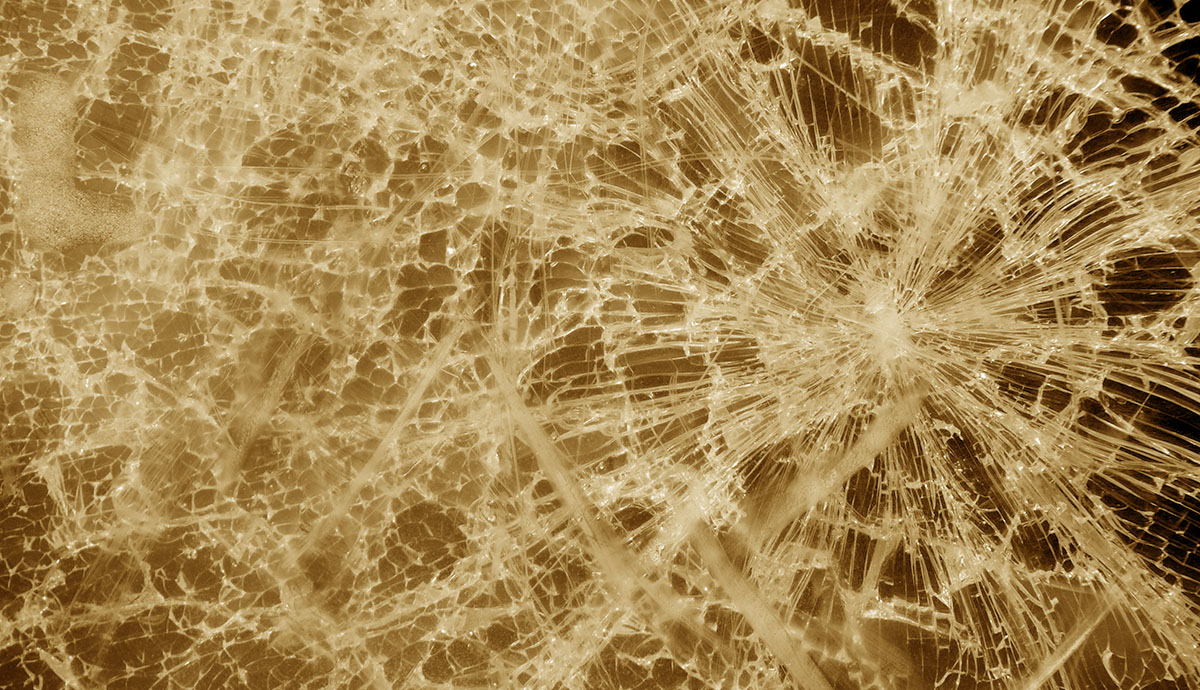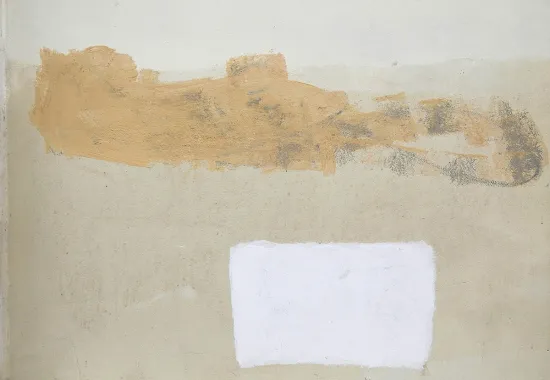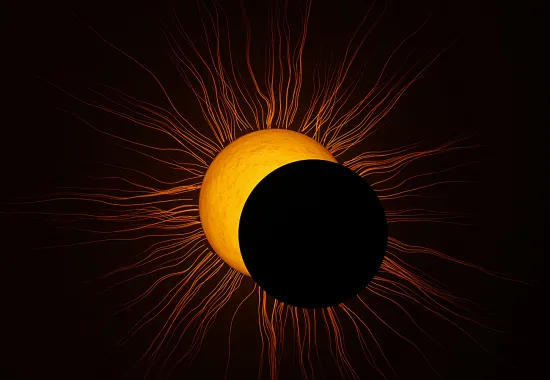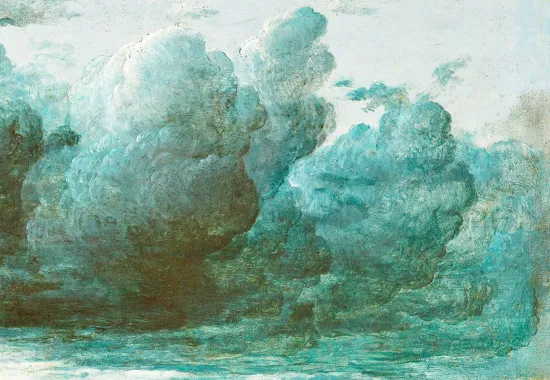The Sharp Edges of a Broken World: A Review of Fractures Carlos Andrés Gómez
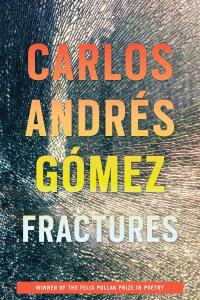 As I sit down to write this, it isn’t lost on me that ours is a time of fever-pitch anxiety, full of noise, repeatedly inundated with news of some new breakage: in our social contract, in our planet, in our understanding of ourselves. It’s easy, at times like this, to either: throw ourselves into the waves headfirst, barreling from one crisis to the next; or else turn away and withdraw. In his debut collection Fractures, selected by Natasha Trethewey as the winner of the University of Wisconsin Press’s Felix Pollak Prize in Poetry, Carlos Andrés Gómez resists either temptation. He insists, instead, on a careful examination of the world around him. As the title suggests, each poem presents an encounter with (or meditation on) a moment of fracture, where the speaker confronts a misalignment between himself and the world. What emerges is an emotional and deeply nuanced reckoning with our current moment.
As I sit down to write this, it isn’t lost on me that ours is a time of fever-pitch anxiety, full of noise, repeatedly inundated with news of some new breakage: in our social contract, in our planet, in our understanding of ourselves. It’s easy, at times like this, to either: throw ourselves into the waves headfirst, barreling from one crisis to the next; or else turn away and withdraw. In his debut collection Fractures, selected by Natasha Trethewey as the winner of the University of Wisconsin Press’s Felix Pollak Prize in Poetry, Carlos Andrés Gómez resists either temptation. He insists, instead, on a careful examination of the world around him. As the title suggests, each poem presents an encounter with (or meditation on) a moment of fracture, where the speaker confronts a misalignment between himself and the world. What emerges is an emotional and deeply nuanced reckoning with our current moment.
My first impression reading Fractures is one of lyric fullness. Gómez’s speaker takes great pains to describe his world in meticulous detail full of sonic pleasure. Plosives erupt with alliterative force. Adjectives winch the world into descriptive singularity. Syntax twists with rhetorical surprises. These are poems that beg to be read aloud. Consider the opening lines of the poem “Last Sunday at Bootleggers”:
My entire wardrobe was Canal
Street original, knockoff chic,
adolescent sleek in my double XL
blue & black bubble jacket.
Yeah, I was inside the club
& what? Inside an oversized
coat coated in sweat & Old
Spice, a kid eyeing sixteen but
not quite there.
I love these lines. I love how alliteration and rhyme propels the language; how “inside the club” morphs into “inside an oversized / coat”; how the sibilance of “oversized” and “Old Spice” and “sixteen” creates a hissing sound, a creeping sense of menace. Beneath it all, I love how vivid and specific the language is. I can see the world being conjured.
This is only one of many such examples. All throughout the book, Gómez paints in vivid color, texture, and scale—but he never surrenders the poem to sensual indolence or inactive observation. Instead, Gómez uses his descriptive powers to embellish each poem’s urgency. He immerses the reader in time and place, decelerating the pace into slow motion by sheer accrual of detail. This slow motion, in turn, betrays a heightened feeling of watchfulness in the speaker, an awareness of danger, an attentiveness to the social and emotional forces all around him. I see this in the opening moments of the poem “After the Cab Driver Asks Me—How You Like Black Pussy?”
And she’s on the other side
of the car, a wasteland between
us of worn steel, glass, and blood-
shot eyes that were, at first,
offered me and are now trained
on my right hand’s instinctive
clutch, having retracted into
a fist.
I could go on and on about this passage—how lineation places the speaker’s beloved “on the other side,” makes “the car, a wasteland,” separates the “blood” of “blood-shot eyes” into its own expression of violence. In eight short lines, Gómez dissects a brief moment in time, exploding it to capture its true emotional force. At every turn, Fractures is agonizingly meticulous in its formal maneuvers, but never cerebral or staid. Instead, Gómez’s formal virtuosity deepens each poem’s emotional resonance.
These poems very often begin in extreme close-up before craning out to a long shot, where the speaker can see and ponder a wider context. It is a move the poems reprise again and again, and it is always effective.
In this way, Fractures reminds me of the late poet Lynda Hull, whose skill for lyric description built a cinematic universe that folded storytelling (of runaways, addicts, and star-crossed lovers) into commentary (on gender, class, and race). Gómez’s poems abide by a similar pattern, using finely wrought language to confront larger themes of systemic racism, toxic masculinity, and the meaning of lineage. Here’s another such example, from “Interracial in Flatbush, Brooklyn”:
Each pupil is a dim
swamp flooding, silence
blanketing a shallow body
in Neshoba County, sunset
shedding its absence across
the congealed oven grease
beneath a rusted burner.
A woman’s neck swivels
when we pass, wraps
a hard vowel around her
tongue like lighter fluid
choking a glass bottle
holding a fuse.
Here, again, Gómez expands the narrative moment (vividly described earlier in the poem as “a mouthful of spit / and epithets [flung] toward us”) with metaphor that captures its broader historical context (of bodies in Neshoba county) and the heat of its immediacy (that lighter fluid, that bottle)—but don’t be fooled. There’s a sleight-of-hand at work in these poems. Despite almost always opening in scene, as it were, Gómez interrupts his own narrative storytelling with meditative reflection, as when “Interracial in Flatbush, Brooklyn” takes the following turn:
I have watched
my body’s primal wisdom
flicker dark as a fist-
concealed palm, ache
so volatile it screams
mute. Rage is a language
I unlearn at the intersection
of Ocean Avenue and
Church…
In response to the danger of the external world, the speaker turns inward. He insists on this sacred space of reflection. In doing so, the poems boldly examine complicity, privilege, and (as the title of another poem suggests) inertia. The self is never truly separate from the landscape it inhabits, and therefore never exempt from examination.
As a filmmaker, I often ask where the “camera” appears in any given poem. In Fractures, I’m struck by how effectively Gómez sets his frame and moves his camera. These poems very often begin in extreme close-up before craning out to a long shot, where the speaker can see and ponder a wider context. It is a move the poems reprise again and again, and it is always effective.
Above all, Fractures is a deeply affecting read. This is a book that dares to examine the sharp edges of a broken world and still envision the unifying power of love; to see the child, the father, the beloved, and the homies in their wholeness. The poems never rush to easy epiphanies. Instead, they model hopefulness and affirmation in the face of injustice, grief, confusion—as in these lines from the penultimate poem “Praise”:
Because my body
begins to fail a little more each
morning in minute & quiet
increments like gradual,
gorgeous rust. Because
only survival gifts us those
letdowns that remind
a persistent marvel it is
still here.
Fractures reminds us of the marvel we are, and can be.
Recommended
Mercy
Eclipsing
Psychic Numbing


